Beaujolais: Foillard Morgon Cuvée Corcelette 2020
Rhone White Blend: Domaine Cailloux La Bécassonne 2015
Sauce Vierge (literally, “virgin sauce”) is a French sauce made from olive oil, white balsamic vinegar, chopped tomato, black olives, onions and chopped basil. Less a sauce and more a vinaigrette or salsa, this is arguably the best complement to fish we have yet found! Fresh, juicy, savory but with a sweet touch . . . perfect!
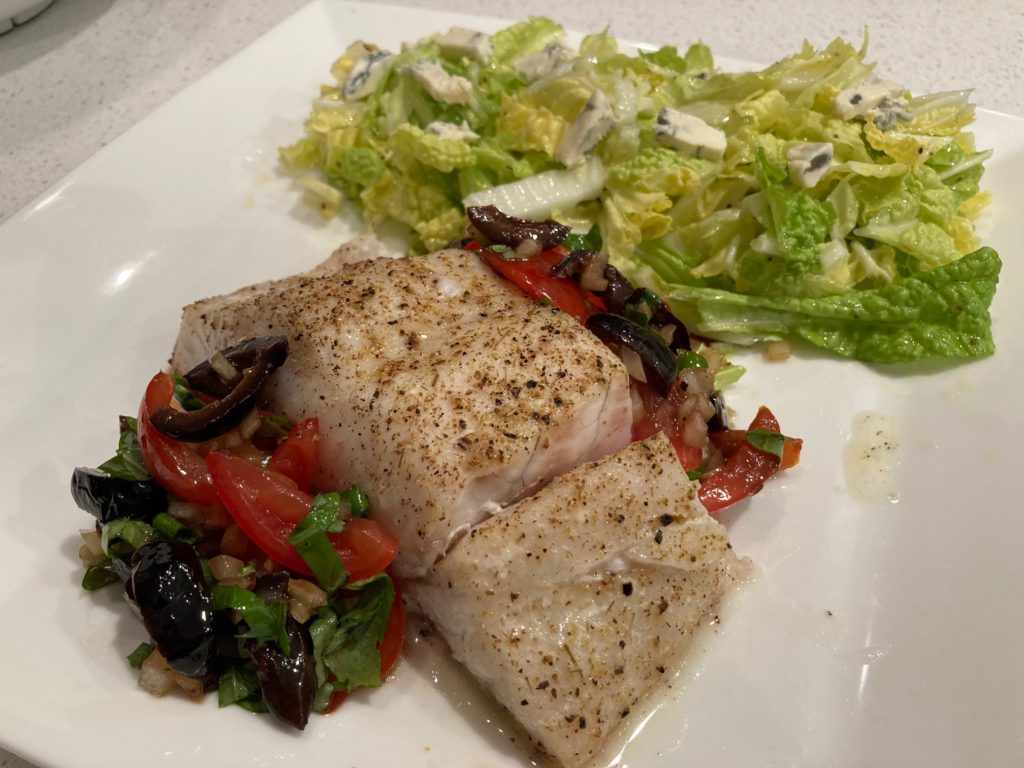
This sauce was popularized in the 1980s by Michel Guérard, a French chef, author and one of the founders of Nouvelle Cuisine. Today, it’s a modern classic, with variations served up by Thomas Keller, Food.com, Food & Wine, and Saveur, to name a few.
According to some, the Sauce Vierge (vee-AIR-jah) was named after England’s Queen Elizabeth I, also known as the Virgin Queen. Other sources claim that it’s called “virgin” because it is uncooked and requires virgin olive oil. Like the naming controversies surrounding Chicken a la King or Egg Cream, we care less about argument and more about how the Sauce tastes and complements grilled or baked fish. And in this case, the enhancement is indisputable.
The recipe (provided below) is best executed with two considerations. First and most important, use a high quality, white balsamic vinegar. We like these two:


The one on the left (De Nigris) is our preferred vinegar as it has less added sugars than the one on the right. Still sweet, but better balanced in our view, and delivers the freshness that is so important in this sauce. But if you are partial to sweet, go with ReModena .
The second consideration is the how you prep the tomatoes and black olives. With a focus on presentation, deseed the cherry tomatoes and slice into quarters or eighths, and pit the olives and slice lengthwise. Obsessive, we know, but presentation is key.
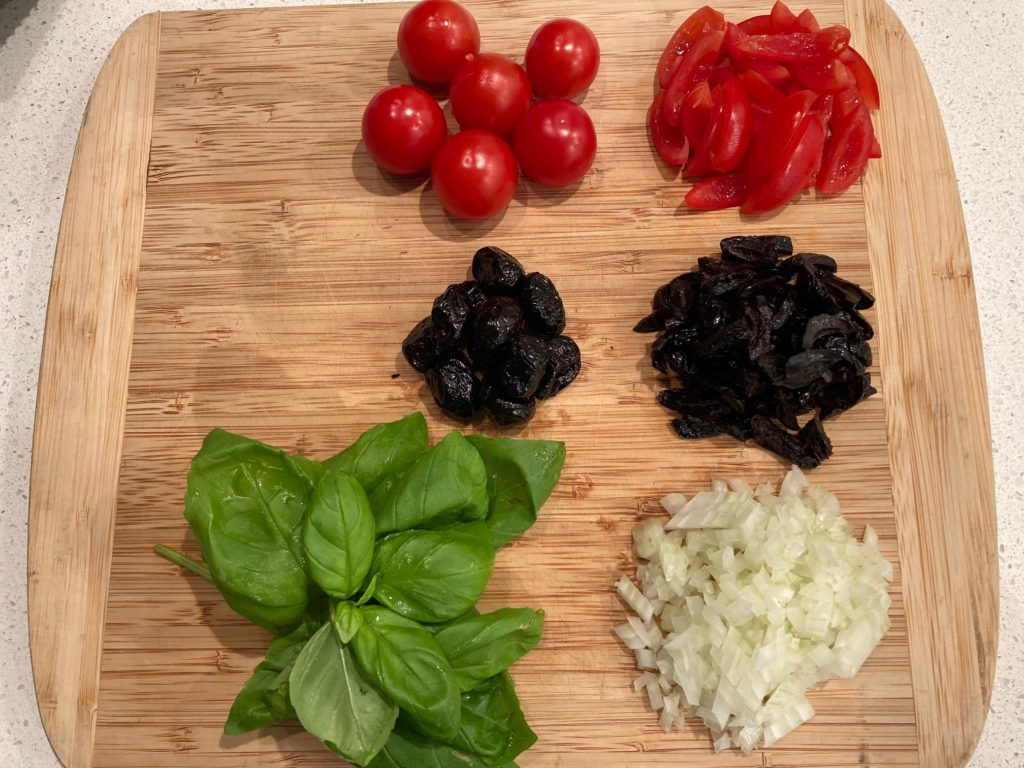
We tried a few white wines looking for the ideal pairing. Chablis – forget it. Too citrusy, too dominant. Same with Sauvignon Blanc from Sancerre. White Burgundy from Saint-Veran was better, less edgy, complementing the tomato and basil nicely, but seemed to clash with the salty olives. Australian Viognier did a bit better still, with the bottling from Yalumba. That said, we finally found our footing with a Côte du Rhône Blanc from France’s Rhone Valley: La Bécassonne.
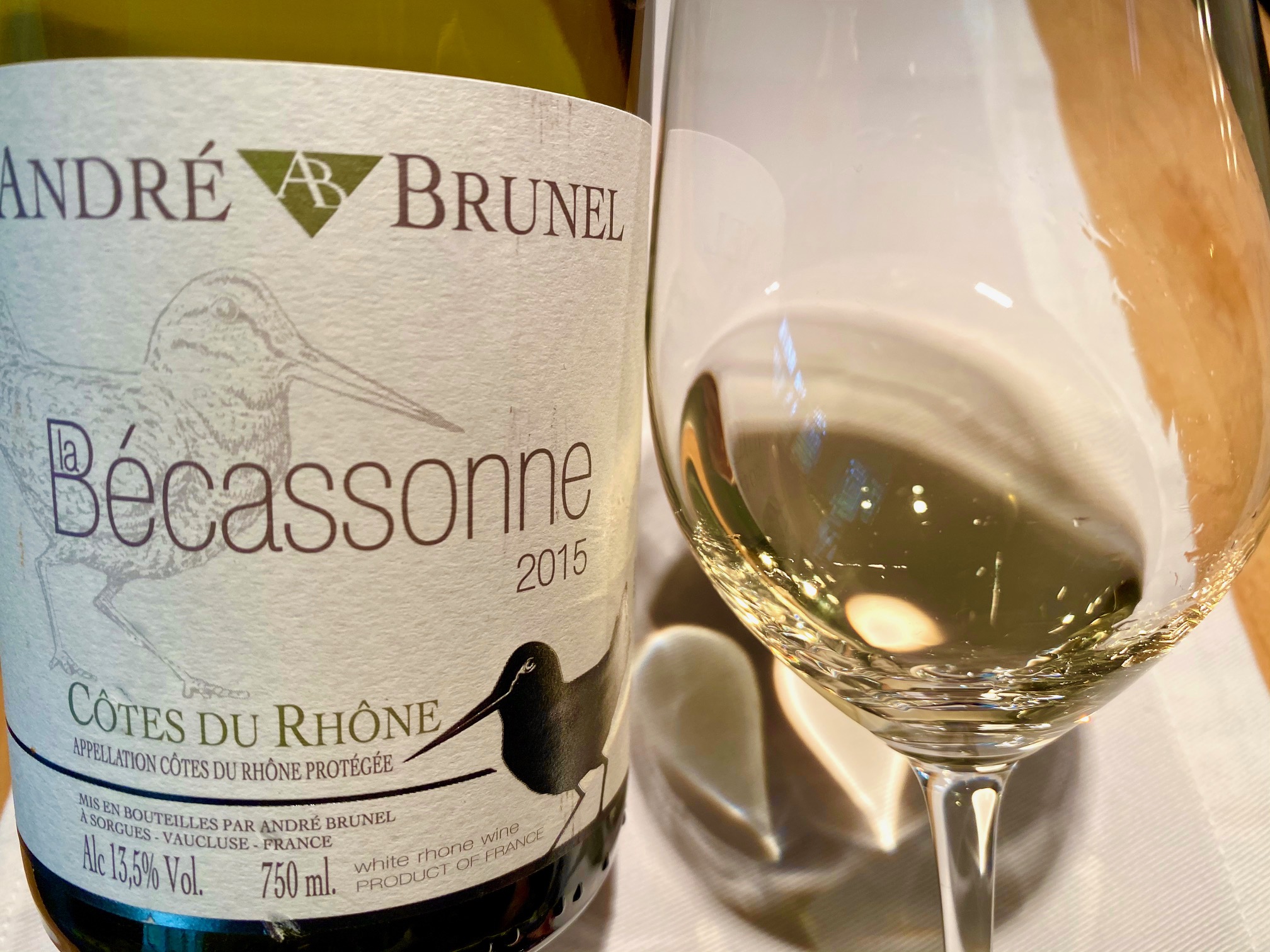
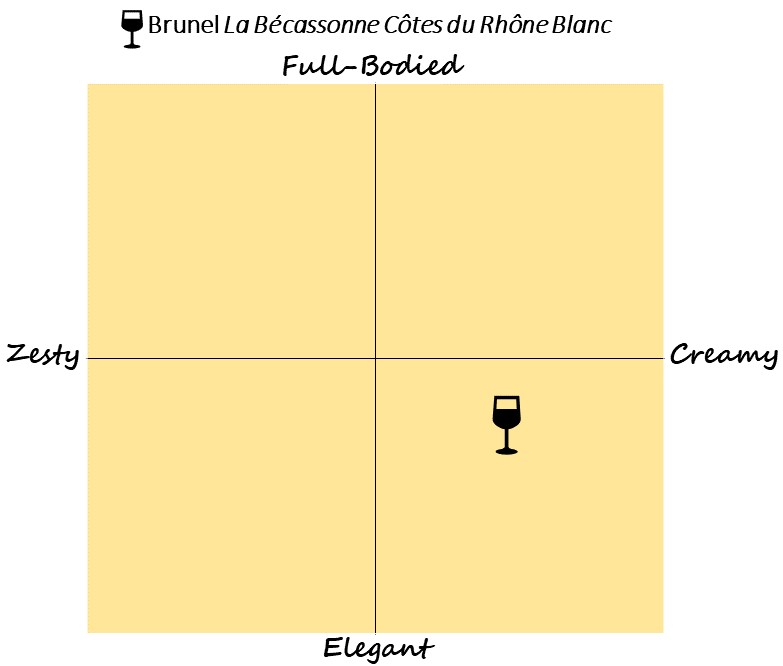
La Bécassonne ($21 for the 2019 vintage) is an entry-level wine from the Chateauneuf du Pape Domaine called Les Cailloux, famous for its red wine called Cuvée Centenaire. Like nearly all Rhone wines, La Bécassonne is a blend; in this case, a blend of Roussanne (50%), Grenache Blanc (30%), Clairette (20%), all from 40-year-old vines, on average. The wine sees no oak barrels; rather, it is aged for 6 months in concrete vats, thereby preserving its freshness, floral character and smooth yet vibrant mouthfeel.
It is important to note that Côtes du Rhône producers have wide discretion on what grapes can be included in their blends. In this case, the dominant grape is Roussanne, which gives elegant, complex notes of honeysuckle, apricot and white peach. We thought this was key to the pairing. Because of its freshness, exotic character and mouthfeel, the La Bécassonne was excellent as a pairing partner.
For red wine lovers, a Pinot Noir from California (we like the Anderson Valley) was fine, but an unadventurous pairing. The acidity was sufficient to stand up to the tomatoes, and the tannins were an appropriate foil for the salty olives. But the sweetness of the white balsamic called out for more fruit from the wine. We found that in the Gamay grape, specifically the Gamay grown and vinified in one of the 10 Crus of Beaujolais: Morgon. Our favorite producer from this site is Jean Foillard.

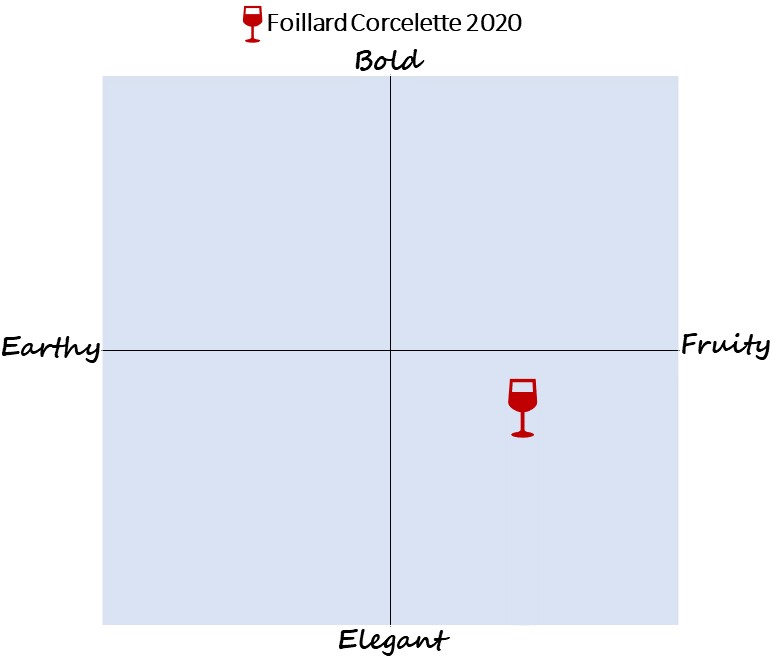
The Foillard Morgon “Cuvée Corcelette” 2020 ($46) comes from the Corcelette vineyard within Morgon, the oldest Beaujolais Cru, noted for its volcanic, granitic soils. It is speculated that these soils give the wine structure and minerality; while the Gamay juices render aromas of cut violets and flavors of cherry, strawberry and spices. The lively, ripe fruit paired nicely with the white balsamic, while medium acidity and low tannins provided freshness and balance, respectively. Serve this wine slightly chilled. Foillard also makes Beaujolais from the Fleurie Cru, just north of Morgon. We highlighted his Fleurie in this post we wrote on Cacio e Pepe.
Both the La Bécassonne and the Foillard Morgon are spectacular wines worthy of a search on your part. But there is no searching for a better complement to your grilled or baked fish than this Sauce Vierge. May we suggest you try this for your fish feast on December 24th?
Sea Bass with Sauce Vierge – Wine Pairing
Ingredients
- 5-6 oz. ripe, sweet cherry tomatoes, seeded and cut into quarters
- 1/2 cup pitted, sliced black, oil-cured olives (about 30 olives)
- 1/3 cup fresh basil leaves, chopped or chiffonade
- 1 small-to-medium yellow onion, finely chopped (3-1/2 to 4 oz.)
- 2 Tbsp white balsamic vinegar
- 4 tsp. extra virgin olive oil
- Salt & Pepper to taste
Instructions
- Gently combine the tomatoes, olives and onion in a mixing bowl.
- Stir in the olive oil and white balsamic vinegar
- About 15 minutes before serving dinner, chop or chiffonade the basil leaves and add to the mixing bowl.
- Lightly salt and pepper the mixture, recognizing that the oil-cured olives already bring a good bit of salt to the sauce.

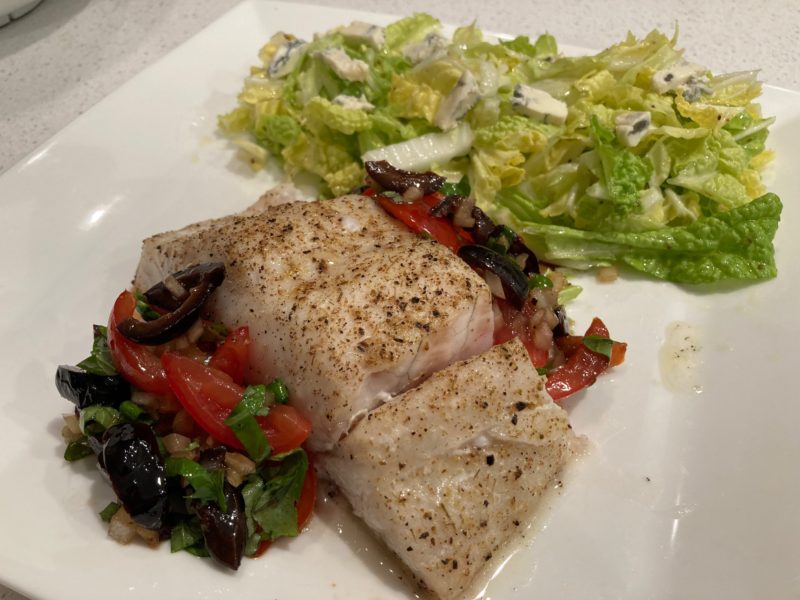
Linda says
This looks amazing! I think we’ll try it.
Steven says
Thanks for commenting, Linda. I hope you enjoy it as much as we do. Just be sure those black olives are oil-cured.
Cindy Lowe Rynning says
I’m always looking for an easy sauce for fish and this is it! Thank you, Steven!
Steven says
Thanks for commenting, Cindy. Have a great Holiday!
Thomas Lansen says
Anotther smashing recipe and pairing, Steven
Steven says
Thanks, Tom. All the best to you and Tara this Holiday Season!